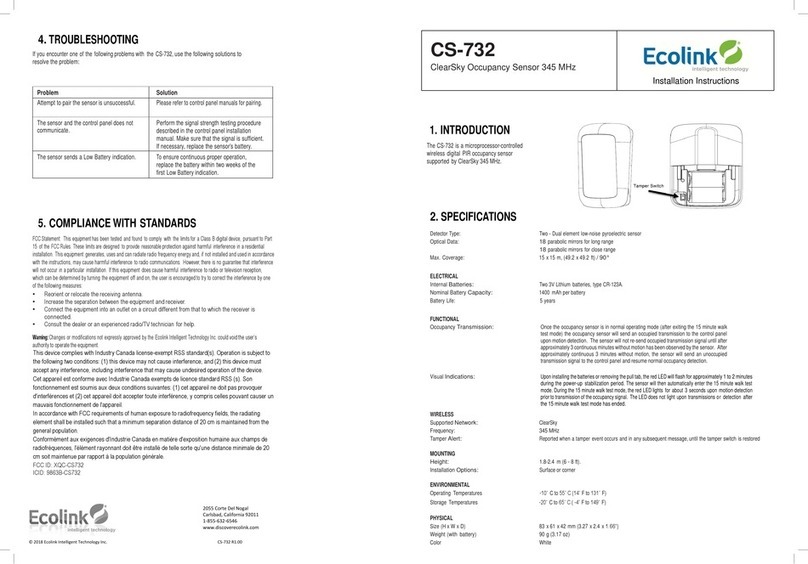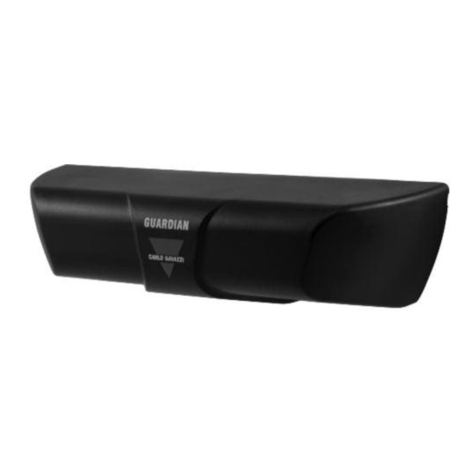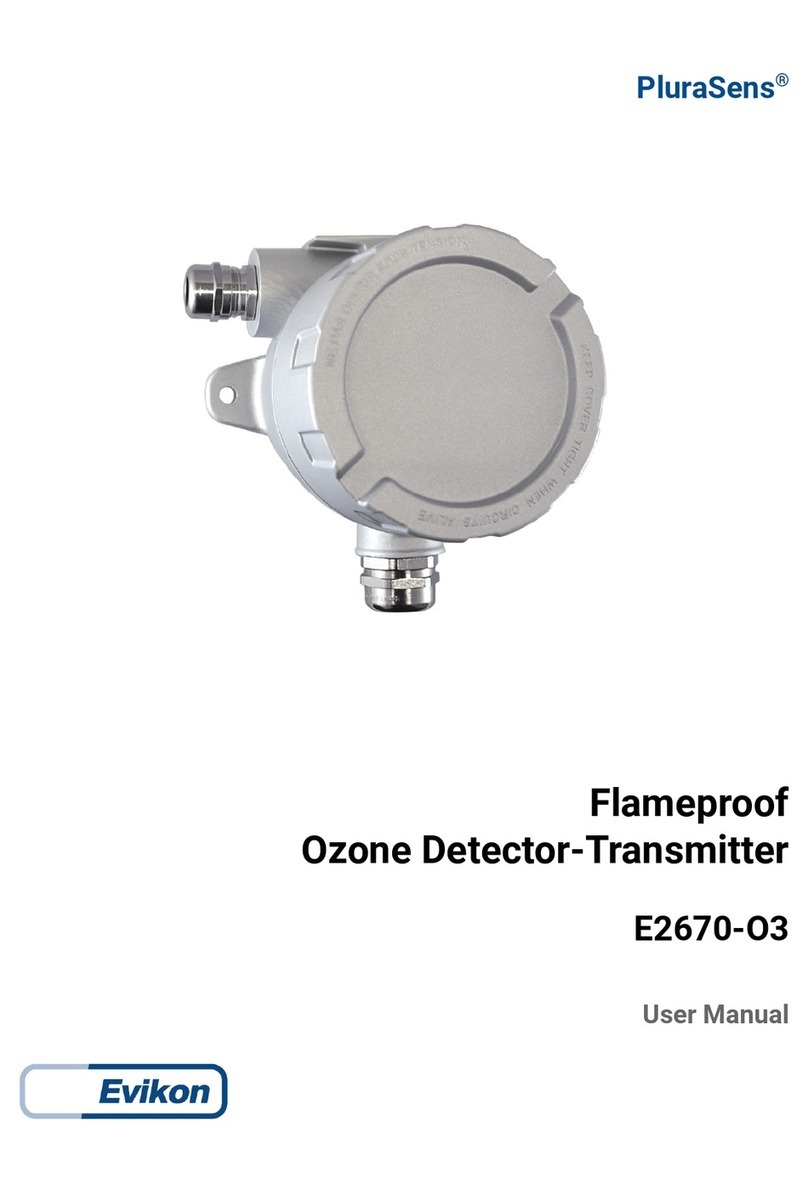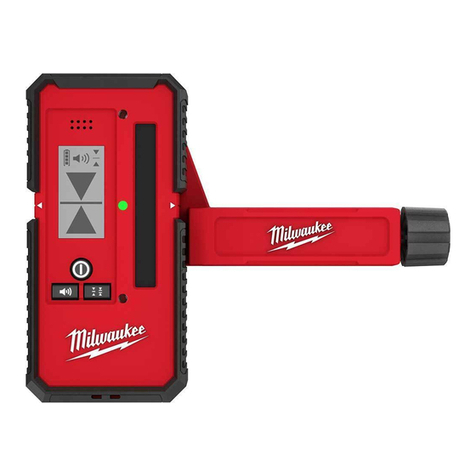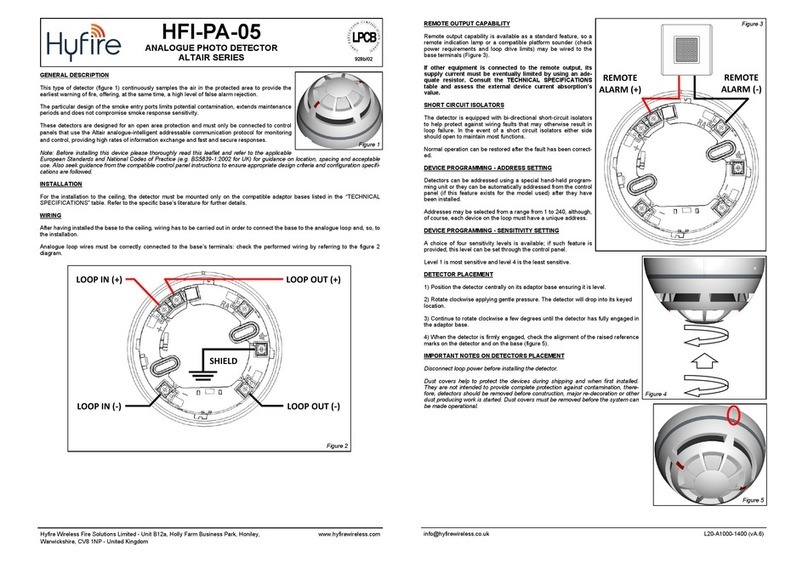FDD CR 135-2C User manual

THERMOFLEX®AUTOMATIC THERMOSTATS
FOR FIRE ALARM SYSTEMS
90 Nolan Court, Unit 34, Markham, Ontario, Canada L3R-4L9 Fax(905) 477-2826, Tel(905) 479-7116
Electronic products dedicated to the safety of life and property
Web Site - http://www.firedetectiondevices.com Email – orders@firedetectiondevices.com
Installation Instructions for Models:
CR 135-2C, CF 135-2C, CR 165-2C, CF 165-2C, CR 200-2C, CF200-2C, CF 285-2C
Description:
The “-2C” series of heat detectors are described as alarm initiating devices, double circuit with
two sets of Normally Closed contacts.
The Model Number prefix “CR” indicates that the detector is a combination Rate-of-Rise and
Fixed Temperature, often referred to as “Dual-action”. The Rate-of-Rise function allows the
detector to open both sets of its contacts when the temperature at the ceiling increases at a rate
of 8.4 Celsius degrees (15 Fahrenheit degrees) per minute. The contacts are commonly used
to initiate ancillary functions that require the opening of a circuit to operate a device.
The Fixed Temperature portion consists of a spring-loaded plunger held in place by a eutectic
solder that will fuse at the specific temperature (in F degrees) as indicated by the Model Number
i.e. 135,165,200 and 285 degrees.
The Model Number prefix “CF” indicates that the detector is Fixed Temperature Only, and will
therefore not respond to a rate of temperature increase but will operate when the detector fuses
at the prescribed temperature as indicated by the model number. This detector is referred to as
“Fixed Temperature Only, non-restorable”.
Location:
The “CR” series detectors are installed in areas where rapid increases in ceiling temperature
are not expected. Such locations include dwelling units, storage cupboards, electrical closets,
material storage rooms, shafts (other than stairwells), transformer vaults, electrical rooms, and
sprinkler rooms.
The “CF” series detectors are installed in areas where rapid increases in ceiling temperature
are expected. Such locations include boiler rooms, industrial kitchens, commercial laundry
rooms, janitor closets, change rooms with shower facilities, and saunas.
It is important to consider ambient temperature conditions when selecting the detector’s fusing
temperature. See Engineering Specification (below).
Engineering Specification: Models CR 135-2C, CR 165-2C and CR 200-2C detectors are dual-action
type, that will respond to a rate of temperature increase at the ceiling of 15 Fahrenheit degrees per
minute (8.4 Celsius degrees per minute). These detectors will also respond when the fixed
temperature (non-restorable) threshold is exceeded. Dual-action detectors are installed in areas where
rapid fluctuations in ceiling temperature are not expected. In areas where sudden increases in ceiling
temperature are normal, specify Fixed Temperature Only units i.e. CF 135-2C, CF 165-2C, CF 200-2C
or CF 285-2C. Detectors shall be installed in areas where environmental conditions including dust,
vapours, insects, etc., would cause an ionization or photoelectric type detector to initiate a false alarm.
*assumes a flat, uninterrupted ceiling at a height not exceeding 10ft / 3m.
Model #
Function
Type
Release Temp.
Temp. Rating
Range
Max. Installation
Temp
Color dot on fin
Spacing between
detectors*
CR 135-2C
Dual-action
135⁰F / 57⁰C
Ordinary
100˚F / 37.8˚C
None
70ft / 21m
CR 165-2C
Dual-action
165⁰F / 71⁰C
Ordinary
100˚F / 37.8˚C
Grey
70ft / 21m
CR 200-2C
Dual-action
200⁰F / 93⁰C
Intermediate
150˚F / 65.6˚C
White
70ft / 21m
CF 135-2C
Fixed Temp.
Only
135⁰F / 57⁰C
Ordinary
100˚F / 37.8˚C
Black
40ft / 12m
CF 165-2C
Fixed Temp.
Only
165⁰F / 71⁰C
Ordinary
100˚F / 37.8˚C
Black and Grey
25ft / 7.5m
CF 200-2C
Fixed Temp,
Only
200⁰F / 93⁰C
Intermediate
150˚F / 65.6˚C
Black and White
25ft / 7.5m
CF 285-2C
Fixed Temp.
Only
285⁰F / 140⁰C
High
225˚F / 107.2˚C
Black and Blue
25ft / 7.5m

90 Nolan Court, Unit 34, Markham, Ontario, Canada L3R-4L9 Fax(905) 477-2826, Tel(905) 479-7116
Electronic products dedicated to the safety of life and property
Web Site - http://www.firedetectiondevices.com
Installation:
For conventional, initiating circuits or when using an addressing module, Normally Open
contacts are usually required. As this detector is Normally Closed on both sets of contacts,
connection onto an initiating input circuit should be carefully considered.
The contact configuration relative to the corresponding terminals is indicated in the following
sketch.
All wiring must be installed in compliance with the local Electrical Code using approved cable,
AWG 18 minimum. Begin electrical connections by stripping approximately 1” (2.5 cm.) from
the end of each wire. Insert the stripped end into the wire-retaining hole in the terminal bar,
wrap clockwise around the terminal screw, and tighten.
For use with Addressable/Analogue FACP’s, the detector is connected to the appropriate Data
Communication Link (DCL) by means of an addressing module, in accordance with the panel
manufacturer’s instructions relating to the connection of a Normally Closed device.
Contact Electrical Rating:
3A @ 125 VAC, 1A @ 28 VDC, 0.3A @ 125 VDC, 0.1 A @ 250 VDC
Testing:
Testing the “CR” series detector
Testing the Rate-of-Rise portion, is accomplished by applying heat from a controlled heat
source, such as a hair blow dryer, held 8-12 inches away and aimed at the detector. The
detector will respond within 6-10 seconds.
Portable test units designed specifically for this purpose are acceptable, and must bear a UL
listing mark.
Care must be taken to not allow the heat source to reach the device’s fusing temperature. If the
detector’s fusing temperature is reached and the plunger is released, the detector will be in
permanent alarm and must be replaced.
Devices using open flame are prohibited from testing heat detectors.
Testing the “CF” series detector
The Fixed Temperature Only detector, cannot be tested by warming the unit as permanent
opening of the contacts may result, requiring replacement of the detector.
Input Circuit N/C
Input Circuit N/C
This manual suits for next models
6
Table of contents
Popular Security Sensor manuals by other brands
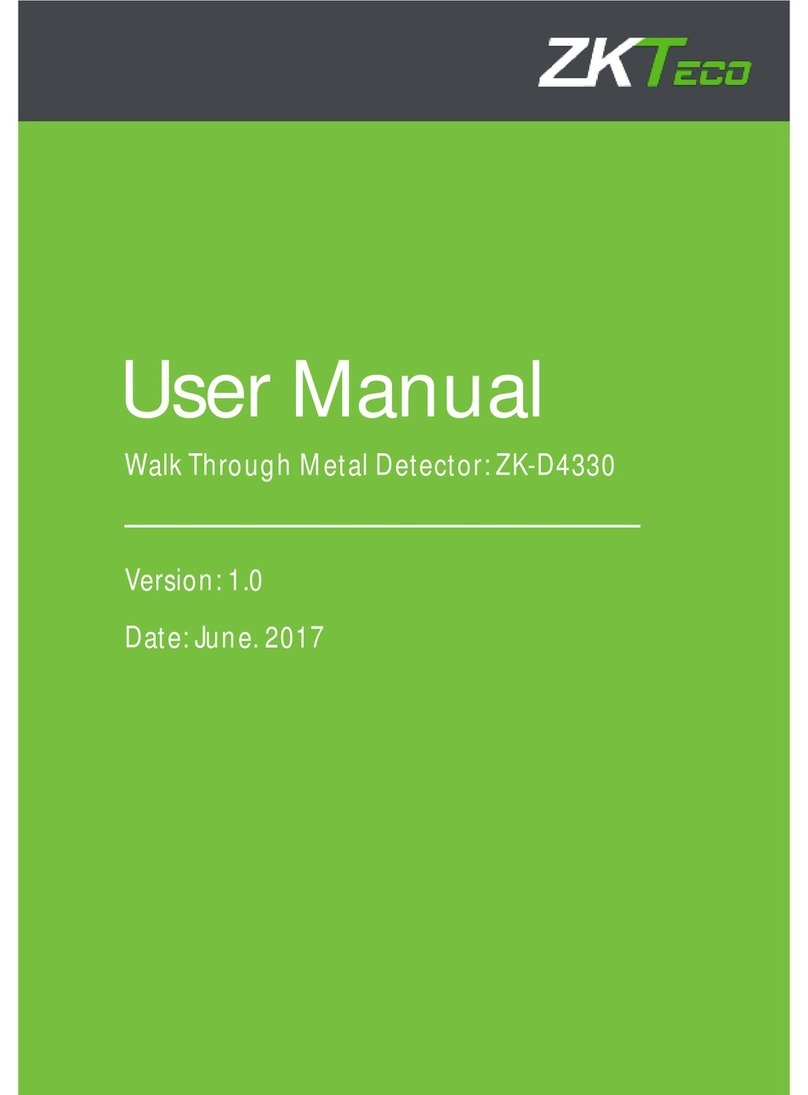
ZKTeco
ZKTeco ZK-D4330 user manual
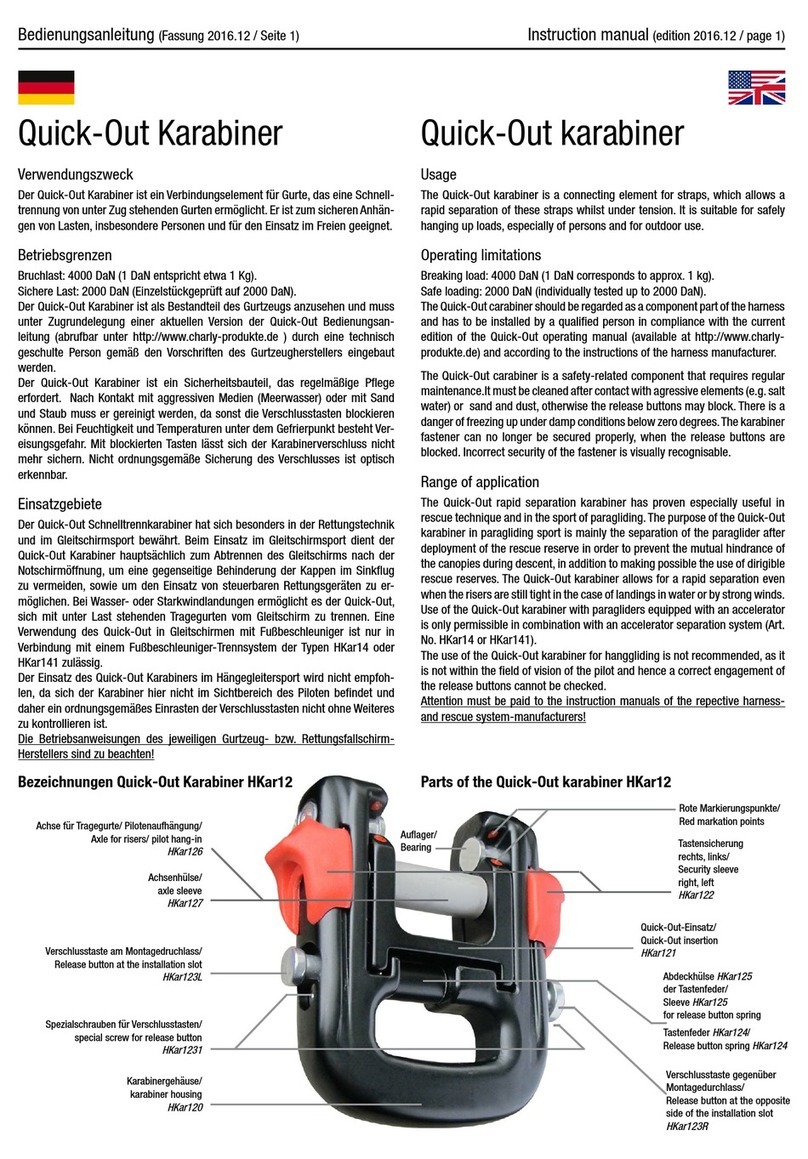
Finsterwalder
Finsterwalder Ouick-Out HKar12 instruction manual

White Rodgers
White Rodgers 956 Series installation instructions
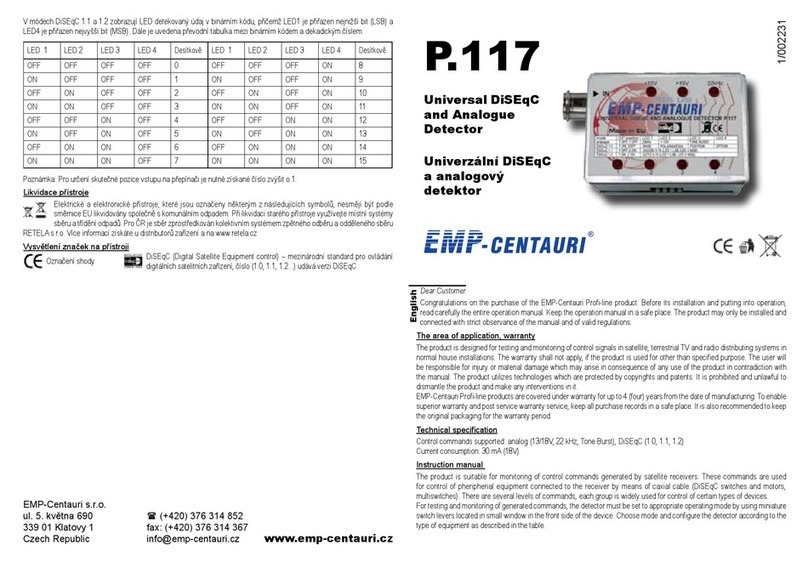
EMP-Centauri
EMP-Centauri P.117 instruction manual
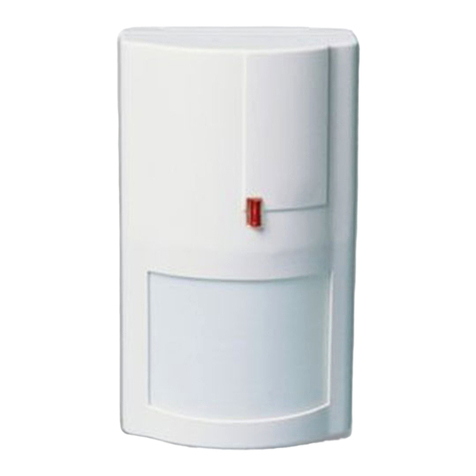
DSC
DSC WLS904PL-433 installation instructions
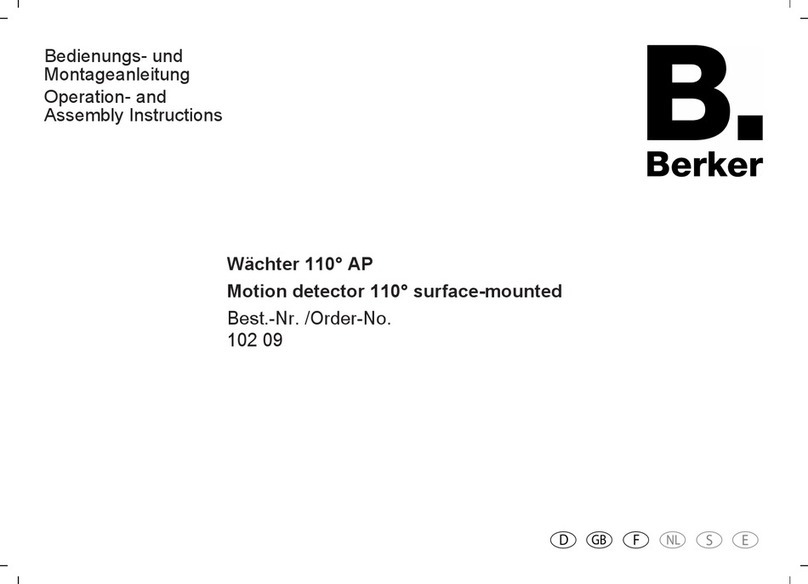
Berker
Berker 102 09 Operation and assembly instructions
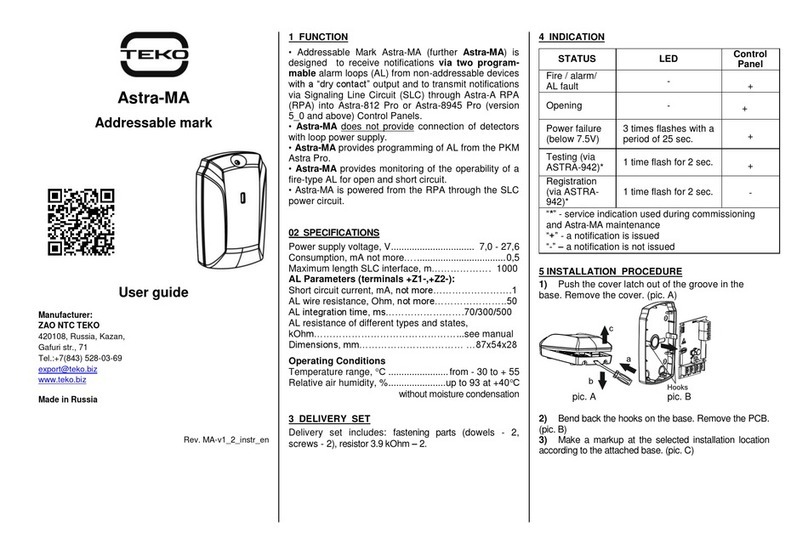
teko
teko Astra-MA user guide
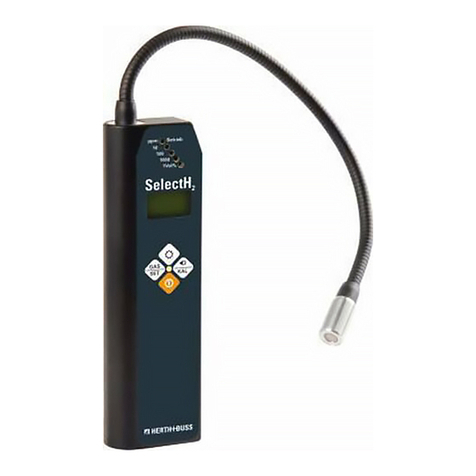
Herth+Buss
Herth+Buss ELPARTS SelectH2 mini operating instructions
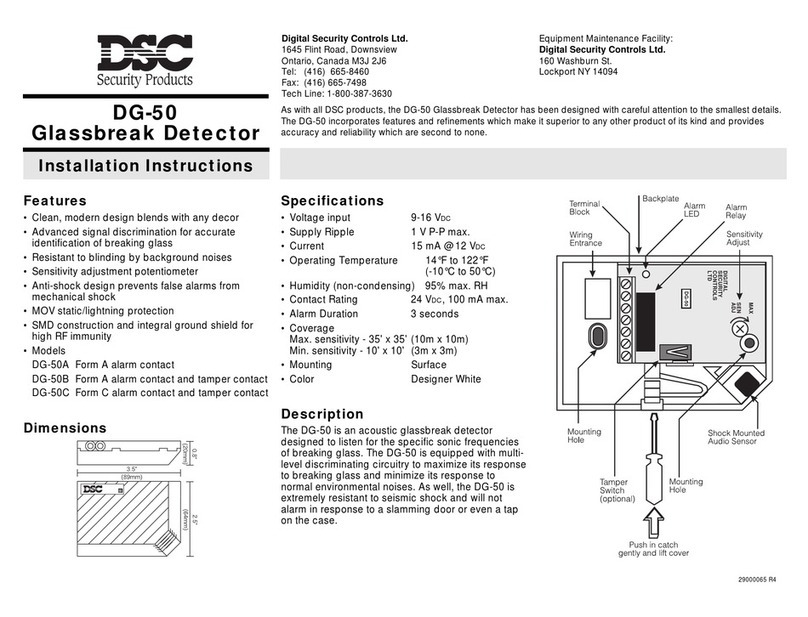
DSG
DSG DG-50 installation instructions

Huazheng Electric Manufacturing
Huazheng Electric Manufacturing HZJF-9008 user manual

Chamberlain
Chamberlain 772E installation manual

Honeywell
Honeywell FlexGuard 5853AP installation instructions
